Antony Cummins is a FRAUD
An Updated FAQ and Resource List on this Menace of the Martial Arts
By Paul 'Batman' O'Brien
B.A., N.C.E.H.S., Dip. Acu., Adv. Dip. OBB, Cert Clin. Med. Pn1, PN-SSR, PN-NCA, M.AFPA, M.ETCMA, M.C.Th.A.
Antony Cummins is a name that many new to the Samurai and Ninja martial arts become familiar with quite quickly. He is a published author on several volumes of Ninjutsu lore and history and has published translations of several Japanese texts relating to the feudal Japanese Ninja and Samurai. He also runs a successful Youtube channel, where he provides near daily in depth video discussions on various aspects of Japanese martial culture and opinion pieces along with a variety of instructional videos.
Index:
- Part 1 - Antony Cummins is a Fraud
- Part 2 - Antony Cummins is DANGEROUS
- Part 3 - Antony Cummins is not a Martial Arts Teacher
In this in depth FAQ I'm going to share with you my opinion in regards to Cummins work. And for his students, supporters and those interested in the material he presents I'm going to give you a selection of further resources where you can learn authentic and accurate information and receive proper safe instruction.
To Antony Cummins credit, he is a well educated man, with a degree in Ancient History and Archaeology and a Masters Degree in Archaeology, via the Victoria University of Manchester. Further he has appeared in a variety of documentaries including those of NHK and the History Channel. He has many fans and supporters of his videos, publications and of course a school of martial arts he is attempting to recreate called Natori-ryu.
Antony Cummins, a man of controversy
As such, many see him as he presents himself, an authority figure, historian and researcher, who is providing genuine facts concealed or previously misunderstood about the ninja, samurai and koryu bujutsu (old martial arts schools). He presents himself as a man who risks ridicule and scorn in his unbending quest for the truth, whose only wish is to unite everyone, and can't understand why people won't cooperate with him and accept his truth.
As a result, on the internet at least, Cummins has positioned himself as a character of controversy, a sound tactic for attracting attention and views to his videos and publications, as seen by the success of President Donald J. Trump, who used a similar tactic to great effect. In a similar vein to President Trump, Cummins makes volatile and often inflammatory statements in his videos which attract the attention of the legitimate martial arts community. The reaction then further fuels the persecution Cummins experiences and provides legitimate evidence to his supporters of Cummins claims.
I have no interest in Antony Cummins; I have never met him and wish him no ill will, but I don't particularly want to contribute to his view counts or promote him in an fashion, which perhaps raises some curiosity as to why I am writing this article?
Why am I writing about Cummins?
Fundametally, as I'll cover in part 2 - Antony Cummics is DANGEROUS. He represents a REAL risk for causing injury and through that represents a significant risk and danger to the continued practice of the martial arts here in Ireland.
In part 3 - Antony Cummins is not a Martial arts Teacher, I'll continue and show you how he systematically demonstrates his lack of understanding in the martial arts and how he is making deliberate false claims for his personal and financial gain.
All of this is reason enough, but I have another one.
I get a LOT of email about him. Asking is this (insert claim/statement here) accurate? Is X true? Why do you say A, when he says Z? This has risen dramatically since Cummins began speaking less about the ninja and has started speaking more about the samurai, specifically the koryu and within that Iai and Niten Ichi ryu, in his efforts to promote his latest books and the Natori Ryu school he is engaged in rebuilding.
I have received enough of these emails that I feel at this stage it is easier to have a series of FAQ articles on the matter that I can simply link to rather than dealing with every complaint and query individually. I have no doubt that over time as this continues I shall have to revisit and update this discussion with more specific Antony Cummins fact checks so feel free to check back periodically. With that, let's begin with Part 1 - Why Antony Cummins is a fraud.
Part 1 - Antony Cummins is a Fraud
Firstly I want to establish that there are a lot of people who watch and read Cummins material and get genuine value from it. If that helps bring people into the smaller world of the koryu and the genuine teachings I am happy. I worry however, that experience to Cummins misinformation will be taken as a primary source on information and colour the new students view, either consciously or unconsciously to the actual facts, history, beliefs, techniques and lifestyles of feudal Japanese warriors.
Unfortunately, there are many out there who don't have access to the Japanese language, original sources and respected teachers and a such must rely solely on English language sources for their understanding. And this means they rely on unscrupulous individuals such as Cummins who take advantage of that enthusiasm and interest.
Recently I was discussing this with just such a interested student. They are intelligent, enthusiastic and eager to learn more about authentic samurai arts and history and they cited two works by Cummins as an example of his good work. And in fact it was this discussion that promoted my final decision to publish this article and continuing FAQ.
"Samurai War Stories: Teachings and Tales of Samurai Warfare" by Anthony Cummins and Yoshie Minami is billed as, "The first English translation of 17th-century Japanese Samurai works which have never been out of print in Japan since printing was invented".
One may take it as a simple translation of a series of texts. However this is not so straight forward and not a product of Cummins work or knowledge and highlights one of my primary problems with his methods.
Antony Cummins does not speak or read Japanese.
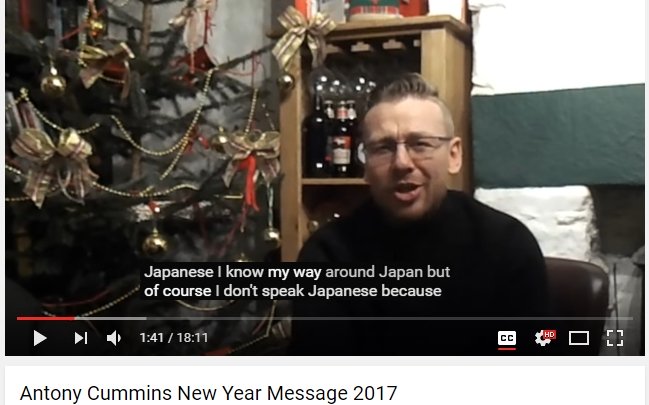 Antony Cummins does not speak Japanese. Source via Antony Cummins New Year Message 2017 video via YouTube
Antony Cummins does not speak Japanese. Source via Antony Cummins New Year Message 2017 video via YouTubeCummins does not speak or read Japanese. He acknowledges this. He does however have a team, primarily Yoshie Minami who translates the Japanese text into English. However, Cummins has also confirmed that Minami cannot read Classical Japanese.
"The original documents are in ‘old Japanese’ thus Dr Nakashima Sensei will translate this into modern Japanese. Yoshie Minami will then take that translations and render them into a basic English format. Finally Antony Cummins will create the full English version and develop it from a historian’s point of view." "
- Antony Cummins original website
and
"For those of you who want to know which script we are working from we are working from the Tokyo National Diet Library version, we used modern Japanese for anyone to read as Kanbun can be difficult” -
- Antony Cummins on Martial Planet
Which means, they are not working in such cases from primary source documents. It is a translation, of a transliteration, of a copy.
And this is where Cummins comes in - he discusses this in several of his videos - he reads what she has translated and changes it, to flow better, sound better and injects his own erroneous interpretation into the text.
That is a problem. Because then the work he produces, such as Samurai War Stories is not a translation of the texts he is claiming to present - it's his interpretation of someone elses interpretation of someone elses interpretation.
Japanese is very tricky to translate - I've written an article on just this topic. Basically Japanese is a pictographic language - there is NO DEFINITIVE method of translating those pictures into specific English or Romanised letters. In addition you have to preserving the meaning of the source text, know as "semantic invariance". Cummins dismisses this in favour of his opinion on what it should be, not what it is.
You then need to assess the intent of the source text (pragmatic invariance), again Cummins dismisses this in favor of what he feels it should be. (He does this also with his martial arts practice, ignoring the texts he claims to adhere to in favour of how he feels about it - I discuss this in greater detail in Part 3)
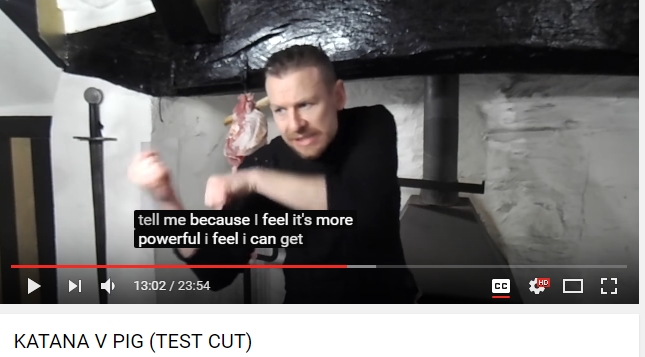 Source via Antony Cummins Katana V Pig video via YouTube
Source via Antony Cummins Katana V Pig video via YouTubeFinally, we need to look at the structure (structural invariance) - where we have a great deal of confusion...not to mention attempts to map each individual word to its English equivalent accurately (lexical invariance). This is Cummins primary focus, to take what was written and make it sound good to western ears. This is of course very different from an accurate translation.
Please understand that what you read in Cummins work is about as accurate as to the source text as the hilarious game of translating the names of movies in English to Chinese, via Google and then that back into English.
"Ghostbusters" in China translates to "Super Powered Dare Team"". In Japan Leaving Las Vega is "Your Drunk and I'm a Prostitute". "As Good as it Gets", comes out in China as "Mr. Cat Poop". Which is perhaps the most fitting example of Cummins style of "work".
Think I'm exaggerating, in his video titled Natori Ryu Seminar - Winter 2016, Antony openly states the following, when reading an English translation of a Buddhist sutra....
"Just sometimes, especially me, I get caught up on some of the terminology, cause they don't translate it, they just leave it in situ [my note: he is referring to a name here. A name.] So we got this first bit here, which is the name of a person...or a god if you will, it's like a god, a god's name, so basically it's like....em....'this really great holy dude', that's the Antony Cummins translation".
- Antony Cummins, Natori Ryu Seminar - Winter 2016, 31:24 - 31:49, via Youtube.
To quote an actual historical researcher, Dr. Karl Friday...
I would strongly advise ignoring anything and everything that Cummins writes. He has absolutely no training or credentials related to Japanese history, and apparently doesn't even Japanese.
... I definitely don't recommend putting stock in ANY translation, unless you can be sure that the translator has the skills (the ability to read the language of the original text, the background knowledge of the society and culture that produced it needed to properly understand and interpret it -- ALL translation is interpretation -- the needed understanding of the historical context of the text, the ability to write clearly and accurately in the target language, etc.) to do the job. Nothing about Cummins' background suggests he has any of these skills, and the fact that he believes it (is) okay to delegate primary source research and translation to associates (even if they are qualified -- and why would anyone with the skills and training to do proper historical research and translation be content to do grunt work for someone else, rather than writing his or her own books?) demonstrates a shallow and amateurish understanding of what history and historical research are about".
- Dr. Karl Friday, Prof. Emeritus Dept. Japanese History, University of Georgia, Professor of Pre-modern Japanese History at Saitama University. (Comments made on Martial Planet)
But let's investigate further...
Cummins is, by his own definition NOT a historical researcher
Cummins bills himself as a "historical researcher", asking questions and exposing unpleasant truths. Which is all well and good, I have no problem with that, if that is what was happening (spoiler warning, it's not).
In a video titled "Introduction to Samurai with Antony Cummins - Part 1" he explains about the nature of a (samurai) historical researchers work and that it encompasses four fields:
- Archaeological Investigation
- Documentation
- Images/Iconography
- Living traditions / Anthropology
Cummins states you have to have ALL of these aspects to have a clear picture of history and rates Living traditions as the lowest and least important (which is ironic as he is trying to recreate a dead ryu - from a book - which must, if still extant traditions are low value, a dead ryu must be valued ever even lower right? - and I'll come back to this one shortly).
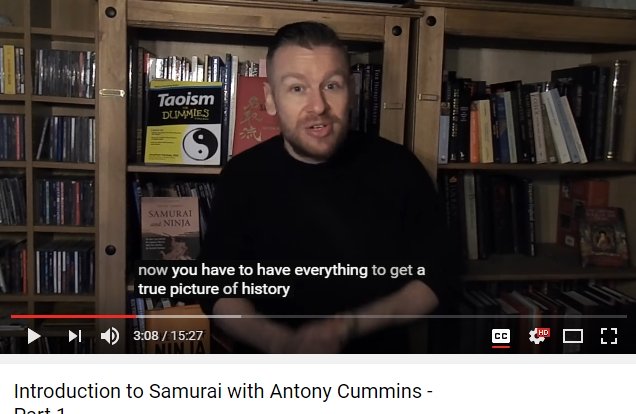 source via YouTube
source via YouTube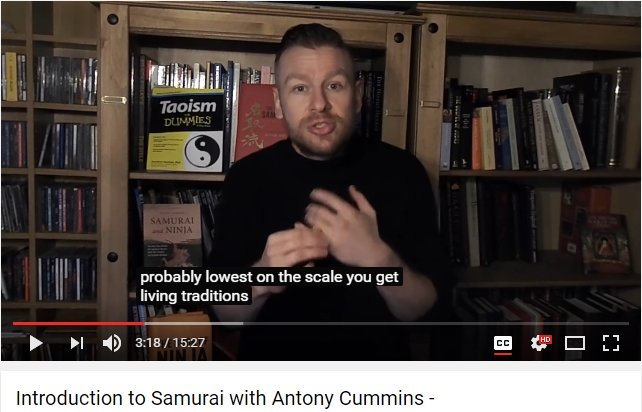 Antony Cummins has the least respect for living traditions. It would make sense then he would have even less respect for dead ones, right? Via Youtube
Antony Cummins has the least respect for living traditions. It would make sense then he would have even less respect for dead ones, right? Via YoutubeCummins is correct in his assertion that from true historical context and research care and attention must be paid to each of these aspects. But he doesn't care for them, and in fact conducts himself in the manner that he rails against.
For context let me give you some background here; I hold a dual major (degree) in Classical Civilizations, (with a minor in Archaeology) and Philosophy (with a minor in Ethics). I have written and published 3 books on Samurai philosophy, and one on the historical attributes of the swords used within the Musō Jikiden Eishin-ryū tradition. So, I have some idea of what I am talking about, but I would still not classify myself as anything more than a Sunday historian. ;-)
So with that in mind, lets look at Cummins according to his own criteria.
1) Archaeological Evidence
Has he conducted, investigated research into the archaeological evidence?Kind of. He's certainly seen it, been to Japan a few times and seen some museums and shrines.But that is not investigative research, rather Cummins has a habit for taking the absence of evidence as confirmation of fact. His videos on the museum at Iga are a good example.
He collects scrolls, that is true, and antique weaponry but he can't read the scrolls and his respect for antiquity can be seriously questioned considering he demonstrated "test cutting" by slicing ham with a 500 year old sword.
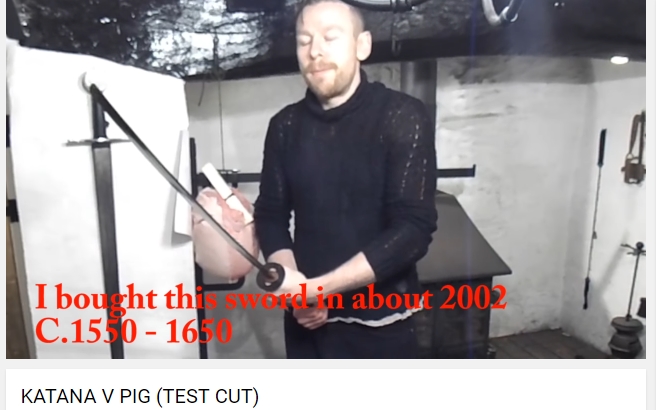 Antony about to cut ham with an antique sword via YouTube
Antony about to cut ham with an antique sword via YouTube2) Documentary Evidence
One of the key factors in engaging in serious academic research and even good amatuer research is to be able to read the language of the primary source material. Cummins cannot do this, which we covered above. This fundamentally makes his claim of adhering to documentation falsehood. Regardless of his claims he is not reading PRIMARY sources, he is, and I am being generous here, reading the "translations" he has been given by his research team. This still counts as primary source, but the quality of translation is questionable.
Further as noted, he doesn't even accept these, instead, and I am paraphrasing here, "putting them into his head and mixing it all up and pulling out the simple truths contained in them and sharing that". That product it not historical research, that is bad ham fisted fan fiction.
It is one man's misinformed opinion.
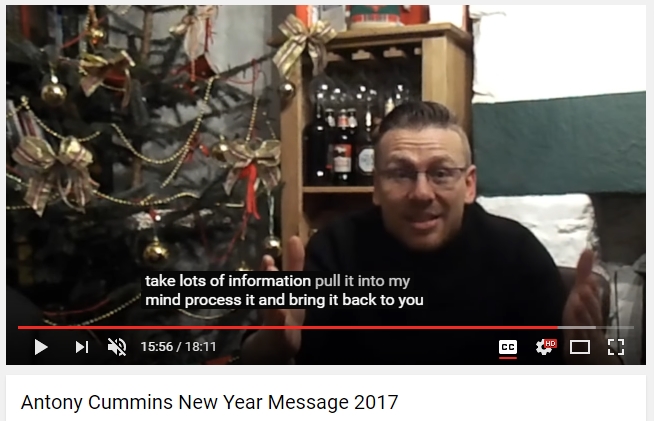
"I obviously don't speak Japanese, what i do have is the ability to take lots of information pull it in to my mind, process and bring it back to you guys..."
- Antony Cummins,
via Youtube [Antony Cummins New Year Message 2017]
Why is this important?
The majority of academic bodies require you to be able to read the source language of the primary texts. Certainly when I was studying Classics in UCD, classes in Greek and Latin (depending on which area you were studying) were required. However, translations can be accepted as a primary source, depending on the quality of the translator, and Yoshie Minami,
So Antony's lack of reading ability in Japanese, while an issue, isn't the most important one - it's his re-imagining of the texts. To quote Robert Moeller, Associate Dean of Humanities and Lecturing Professor,
"Reading primary sources isn't easy.....You also need to think carefully about what kinds of assumptions and beliefs you bring to your reading of a document. You need to make sure that your own person and political opinions don't prejudice the way in which you read the document".
Antony's many videos and discussions openly discuss that he fails to do this, that he does not recognize this an issue. This greatly undermines any credible claim on his part of legitimate research.
His "interpretations" are based on nonsense
As shown in the above examples, the material Cummins puts out are largely based on his interpretation of the material provided to him. As outlined in Part 3, Cummins understands very little of Japanese martial culture and combat. In Part 3, I provide numerous and detailed examples of this. However, even regarding the non-martial arts aspects of his work, Cummins is woefully wrong.
A quick and clear example of this can be found in his book Samurai Arms, Armour & the Tactics of Warfare. Much of the fanfare and promotion of this book is tied into the understanding of "Five Element" Theory and how it applies to Samurai Armour. The blurb of the book reading,
"Armour carried representations of sacred boundaries, which connected the wearer to the pantheon of deities, and was designed and assembled with consideration for the wonderful interplay between yin and yang and the Five Elements. As such, a samurai's armour was a map of his spiritual power and an item of prestige to be gazed upon".
Cummins highlights this importance of the Five Elements once again in a BudoJapan article promoting the book -
"How did the colours of lacings interact with the colours of armour plates? And how did the spirit of the god of war imbue the samurai with power? The answers to these questions, given below along with a selection of other fascinating details, give colour and depth to our image of the samurai....
Overall, a samurai had to consider his status, his past achievements and his personal connection to the Five Elements when constructing or purchasing armour. To wear the wrong lacing, to wear something beyond his station or to calculate the incorrect spiritual relationships of colour and style could all lead a samurai into disaster, but getting it right would set him apart as a man of worth."
- Antony Cummins, https://budojapan.com/feature-articles/samurai-arms-and-armour/
And again in a beautiful spread by Armourer.co.uk in their December 2018 issue. (https://issuu.com/heocon0504/docs/the_samurai_-_arms_and_armours)
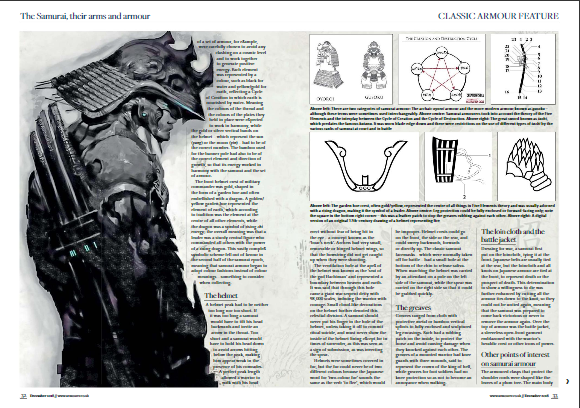
Suffice to say, this correlation of the Five Elements to Samurai Armour is a big selling and promotional point for Cummins in this text. He keeps pushing it. So, here is what he actual writes in the book.
"The combination of colours used for the lacing and the plates themselves could also relate to the Five Elements from the Taoist origin-of-creation myth. For example, black represents the element of water, which nourishes the earth (represented by yellow). Therefore, armour that had black plates and yellow lacing was in a state of generation and positivity, just as water generates the "soil" of earth. In contrast, warriors would avoid a colour combination that reflected the Cycle of Destruction."
- Antony Cummins, Samurai Arms, Armour & the Tactics of Warfare, pgs XVI, XVII
In the Five Element system Water creates and nourishes Wood. Not Earth. To correct his analogy, you water plants (wood) to help them grow.
In fact, in Five Elements Earth DESTROYS Water in the "Cycle of Destruction" and Water INSULTS Earth in the Insulting Cycle. How do you stop a flooding? Sandbags, sandbanks and earthworks. What happens to the earth at the coast line? The sea erodes it and washes it away.
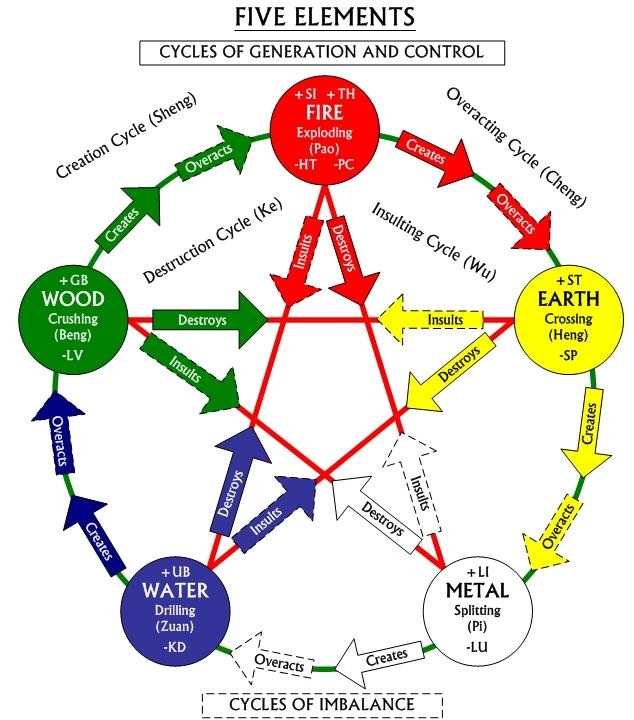
I know this because it's my job. I'm a consultant of Traditional Chinese Medicine. It's how I earn my living and I use Five Element theory every single day, multiple times a day in my work. Cummins is absolutely, categorically wrong.
A 2-minute Google Search would have shown that the in Five Element theory the "Creation Cycle" goes: Fire -> Earth -> Metal -> Water -> Wood -> Fire and so on.
In the Creation Cycle Earth is created and nourished by Fire. Not Water.
His suggestion of black plates and yellow lacing does not represent generation and positivity at all. It does the exact thing he says a warrior would avoid. It is, if anything, a colour combination from the Cycle of Destruction.
Of course, such colour combinations did exist, but Cummins is attaching a significance and story to the armour that isn't there. He's made it up. He has an idea in his head that he thinks is cool and he just makes stuff up to support it. There is literally no basis in the 5,000 year history of Taoist thought and the thousands of texts written on the subject wherein Water insults Earth. It's nonsense.
Seeing Shinobi where there are none
Ignoring facts to fit his narrative, and altering translations to suit his story is typical and rampant throughout the Cummins produced texts.
For example in the Ninpiden;
ノ時軍法ト忍ト一度始其後者忍竊盗ヲ間ト云ウ又左傳ニハ是ヲ長ト号ス其後ハ兩作湯帝ト云.
Cummins version…
"At that time, both the arts of war and the shinobi were initiated, and the shinobi were called kan 間. In the Zuo Zhuan 左伝 they were called cho 長, and after that, ryosaku 両作”.
Now...we actually have a shinobi here! Two of them! But that isn't actually the case. This would more accurately read (this is Eric Weill's translation not mine)...
"At that time, both the arts of war and spying were initiated, spies were called jiàn. In the Zu Zhuàn (the chronicle of Zuǒ) they were called cháng, and after that, liàngzuò".
Now this might not seem like a big deal but it is. Firstly, no ninja, no shinobi. Secondly Cummins does not provide the proper names so that they can be checked and independently confirmed.
This is in large part because Cummins chooses to take other terms, other professions and others acts like burglar, thief, arsonist, and translate that as shinobi or ninja - when in many cases such activities were utterly unrelated to shinobi or ninja activity and history.
And it doesn't stop there. He continually mistranslates whole passages and adds in his own wrong and flawed understanding into the text and this is across every book he has produced.
More Examples of Mistranslated Text and Fake Fantasy Additions.
These are the first paragraphs from Cummins "version" of the Bansenshukai Introduction:
"The military is the final line when concerning the safety of a country and the issue of state survival. It is of extreme importance because it is the basis of statecraft and the nation’s safety and is by no means a minor issue. Military craft is incredibly deep and vast and it is not a matter to be taken lightly.
In any military situation you need to construct a detailed and precise plan beforehand, speculate clearly with the Five Constant Factors and the Seven Plans, understand the feel of your people thoroughly and then, based on these factors, devise a stratagem and conduct your frontal and your surprise ways of attack. Also, if the five characteristics of wisdom, benevolence, trust, courage and strictness are achieved, and if advantages are derived from the three areas of Heaven, Earth and Man, then, even if you have only one thousand soldiers and have to fight an enemy of multitudes, you can be victorious one hundred times out of one hundred battles with absolute certainty"
Everything in bold here is inaccurate of plain wrong.
There is no mention of a "final line" in the text. No mention of state "survival". No mention of military craft being incredibly "deep and vast".
In fact, the reading of this is just wrong.
Rather than big up how deep and vast military craft is, the correct reading is as follows, "It is not a small matter. The meaning of that should be contemplated with calm and caution. Do not treat it lightly."
It is a call to reflect deeply on these matters, not a boast about how deep the matters are. This is a totally different meaning. And speaking of the meaning of the virtues, yeah they're wrong too.
Correctly translated:
- it is virtue not benevolence.
- it is sincerity not trust
- it is valour not courage, and
- it is austerity not strictness.
These are completely different philosophical and cultural concepts. Valour and courage being closest perhaps, but virtue and benevolence are different things, sincerity and trust are different things, austerity and strictness are different things.
And the next part is really bad. Cummins writes,
"and if advantages are derived from the three areas of Heaven, Earth and Man".
This is completely incorrect.
It actually reads the 5 matters are,
"are not different from the three efficacies--heaven, earth and man."
Rather than ascribing an additional 3 fields the whole point of bringing up the 5 Matters is to show they incorporate the 3 areas. They are not separate as Cummins writes. Totally different meaning.
So, in the very first opening paragraphs, Cummins has:
- Added in 3 things that weren't in the text.
- Totally misrepresented the focus of the 1st paragraph,
- Mistranslated 4 of the 5 Matters
- Misunderstood the relationship of the 5 Matters and 3 areas.
Let's keep going.
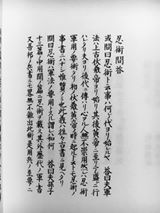 The Kanbun of the Ninjutso Monto that Cummins cannot read.
The Kanbun of the Ninjutso Monto that Cummins cannot read.Cummins:
Question: In which period did ninjutsu come into existence?
Answer: Originally the art of war [including ninjutsu] appeared in the period of Emperor Fu Xi and afterwards became more prosperous in the period of the Yellow Emperor.
Since then it has been passed down through the generations and there was no person of prudence and discretion who did not value it greatly. Thus, ninjutsu is the key to military affairs. Even though it existed in the periods of Fu Xi and the Yellow Emperor, there is no mention of ninjutsu directly in any written documents. Only its essence was there. In this sense you can find it in some ancient writings".
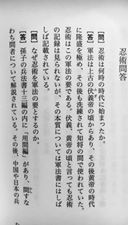 The modern transliteration of Ninjutsu Monto, by Nakashima Sensei, which Cummins also, cannot read.
The modern transliteration of Ninjutsu Monto, by Nakashima Sensei, which Cummins also, cannot read.Again, everything in bold is inaccurate, incorrect or just plain made up.
[問]忍術は何時の時代に始まったか
This literally translates to
"(Q) When did Ninjutsu begin?"
Not, "In which period did ninjutsu come into existence?".
When you look at the kanbun and see the word "Age" is used. You can argue it is the same but it really isn't. In the context of the text question, age means "the amount of time something has existed", hence "When did Ninjutsu begin?"
"Period" in the context of, "In which period did ninjutsu come into existence", implies a specific section of time. While similar it is a different question. It also serves as an example of the way Cummins presents this language of the Bansenshukai as far more educated and formal than the actual text was written and conveys an entirely false air to the document and highlights Cummins misrepresentation of tone and language.
Now, we get into the big stuff.
The line [including ninjutsu] is a Cummins invention. This does not appear in any version of the text. He made it up.
"there was no person of prudence and discretion who did not value it greatly" This is completely mistranslated. It should read, "Since then, it has been transmitted to the following generations. Only conscientious people, with no evil intentions, can use it."
No mention of value.
The next line, "Thus, ninjutsu is the key to military affairs".
This line, 忍術はこの軍法の要である translates as "Ninjutsu is the cornerstone of this gunpo (military Strategy)".
That absolutely categorically is not the same thing as "the key to military affairs". That line does not exist in the modern or kanbun version. It's a fabrication.
At best Ninjutsu is "key" to a very specific approach to strategy being discussed in this manual. That is a very, very different thing than saying it is the key to all military affairs. As that would be absurd. How is ninjutsu key to troop rations, or hygiene or payment or a billion other matters of military affairs. Utter, utter nonsense.
Cummins has inserted his own beliefs into the text when it does not exist in the kanbun, or even the modern Japanese. Rubbish. Utter rubbish.
But he makes stuff and add's it in continuously. Some other quick examples:
Later in the discussion on Kunoichi, he adds in "female agents". That is absolutely incorrect, and not in the text. It is solely his fantasy idea and he stuck it in the book.
And it's not just this book. Don Roley point out this gem. On page 62 of True Path of the Ninja.
Cummins translates:
" 刀に扇を横たえ"
As
"hold your sword upright on the ground and put a folded fan on the end of the sword horizontally like a T shape"
Everything in bold is not in Japanese. Even without being able to read Japanese you can see that the English is a lot longer than it should be.
But let;s come back to this opening section, the first few paragraphs of his "ninja-bible".
"その本質については軍法書にはしば"
Cummins translates this as "you can find it in some a client writings". That is not being said at all. This is another Cummins invention. It is not in the text. It is a false implication Cummins makes to bolster weak evidence.
The text actually translates as, "The essence of it is often in the gunpo (military strategy)".
This is a different statement. Here there is NO implication of a written record (because there wasn't one because the Bansenshukai is a failed propaganda document), instead, it is deliberately vague saying you could read into things if you wanted. Which is what ninja fanboys do all time.
So, first question Cummins:
- Mistranslated the question
- Inserts a concept of "value" that is not in the text
- Makes up a line entirely about Ninjutsu being key to military affairs
- Mistranslated the last line to change the impression being conveyed.
There are literally 16 mistakes, several of them very serious (inserting new lines, creating a false narrative) in the opening few lines of his "translation".
I am not, nor would any credible historian or academic waste their time, going through every single line and every single error in Cummins woeful versions of any of this. It would take forever, because there are serious problems with practically EVERY single paragraph in every single work he has produced.
On Cummins' Samurai and Ninja:
"Basically, the article - or rather, the book it's based on - is crap. It conflates multiple periods of history, making sweeping comments (many of which are misleading and even out-and-out inaccurate for ANY period) in order to produce a silly and sensationalistic picture".
- Dr. Karl Friday, Prof. Emeritus Dept. Japanese History, University of Georgia, Professor of Pre-modern Japanese History at Saitama University. (Comments made on Martial Planet)
His "Facts" are Fantasy
Finally, it is important to note that he completely ignores that the documentary evidence he uses to support his position, even before he manipulates and misrepresents it to further his narrative and his for profit enterprise (see Part 3) to defraud people of the money, have long been debunked and dismissed by most academics in Japan and the West.
The Bansenshukai, Ninpiden and the Shoninki are considered dubious by legitimate historians and experts in and out of Japan. (See this articles series for a full breakdown).
""Wanatani and Yamada (1978:215) and various other historians consider this document (the Shoninki) and others related to Kishu Ryu to be unreliable"
"Wanatani and Yamada (1978:215) are very critical of this document (Togakure Ryu kudensho), noting that it is filled with fictional accounts and is highly unreliable. They also consider the Shoninki, a transmission document (densho) attributed to the Kishu Ryu to be unreliable".
- Dr. David Hall; "Encyclopedia of Japanese Arts", Kodansha 2012, pgs 459 and 264
Basically, the Bansenshukai, Nipiden and the Shoninki are fictional works written by men living in times of peace, removed from the warring periods of feudal Japan by nearly a 100 years.
There is little accurate or authentic information to be gleaned from them. However, Cummins persists in presenting false interpretations of these works in order to produce books filled with misinformation, misleading the public and doing so in order to support a fraudulent enterprise in the Natori Ryu, where he now certifies people as "instructors" for hundreds of dollars in arts that he has no training in, no experience of and no teaching licences in.
3) Images/Iconography
Images/Iconography are important, but must be understood within context. I am fortunate to own a number of beautiful woodblock prints, formerly from her Majesty's collection. I also have a number of scrolls, with some beautiful images of Marishiten and Tengu upon them. They are excellent and insightful but no more accurate of what happened than comic books are today. While Reagan certainly was US President, I don't think he strolled through the lawn of the White House with Superman ordering him to break Batman like an unruly horse.
Many Japanese images are of myth, legends, and portraits of popular theatre actors and performances.
Within the scrolls, the images and texts nearly always feature called "damasare", where the text is vague or illusory, only making sense to those initiated in the techniques and knowledge. There is an excellent article on the subject here - Damasare written by the excellent martial arts author, Wayne Murumoto.
Sadly Cummins, often uses this to twist the meaning, words and context of what he finds to suit himself, for instance, implying that aspects of the Go Rin no Sho regarding posture, could in fact be a lie, which justifies his bizarre and inefficient bowed back crouching stances. (See his terrible Katana V Pig video for more on that exact issue).
Rather than applying academic rigour, and finding the truth as he claims, Cummins takes that which supports his views and dismisses what he doesn't like in both text and images.
4. Living Traditions - the Koryu
Which neatly brings me to the point of living traditions:
- Cummins is not a member of any recognized ryu-ha.
- He is not a member of any living tradition.
He cites this as an advantage as he does not get blinded by the "rose tinted glasses of koryu schools" and it allows him to be objective. Which is all well and good, but that's neither accurate nor it is part of the historical sciences methodology.
Cummins is now trying to resurrect/create a school of martial arts from a book. A book I remind you he cannot read and relies upon others translations. And he does so without cultural context and historical context and his body has not be conditioned in the Japanese manner, as those who follow Natori ryu in the past naturally would have.
As Ellis Amdur, koryu teacher, author and psychologist explains, a KEY aspect of the study of any Japanese ryu, martial or otherwise is how if affects the mind. This psychological organisation is achieved through physical organisation of the ryu- without proper physical training in the art one cannot understand the context, mindset, and physiology of the art. As such it is fundamentally impossible for Cummins to resurrect a dead school with any degree of accuracy.
For more on this I highly recommend Amdur's articles on, "Renovation and Innovation in Koryū", found in Keiko Shokon: Classical Warrior Traditions of Japan, volume 3, Ed. Diane Skoss, published by Koryu Books.
And while I will not get into the Natori ryu project Antony is running in this part, I will include a quote here from Ellis Amdur, which perfectly sums up my thinking on WHY Cummins chooses to recreate a dead ryu over joining a living one:
"...we not only lack the experience of teachers who have used these archaic weapons in mortal combat, because our bodies simply lack the physicality of strength and flexibility of a pre-industrial society.
A man who walks and rides horses as his only means of transportation; who chops his own wood and works in a barefoot crouch for hours at a time, simply has a different musculature, a different plasticity to his tendons then a modern man who works at a desk. The kata were designed for the former man, where literally every waking moment was preparation of the body in a way that we can only mimic with supplemental exercise today.
So some of the kata of koryū can be a disappointment as one realizes that rather than engaging in samurai live-action role-play, you may spend years learning patterns that are not only teaching archaic weapons and methods, but also archaic ways of coordinating one’s body.
Let me put it this way: You want to join a koryū ? Prepare to not only work hard, but to be bored while you are doing it. It comes with the territory"
- Ellis Amdur,
https://freelanceacademypress.wordpress.com/2014/11/06/going-old-school-classical-martial-arts/
I feel this quote, taken from an excellent interview promoting the 2nd Edition of Old School - an incredibly good text on Samurai thought, combat and history, perfectly sums up Antony's disdain for living traditions and his desire to recreate the Natori ryu. In doing so, Antony can, engage, "in samurai live-action role-play", and avoid the hard work and physical conditioning and organisation that comes with training in an actual living tradition.
As Antony Cummins states quite clearly in his video on Samurai history, you need all four components, including the study of a living tradition - which he categorically is not doing.
Cummins ably demonstrates his lack of understanding of living traditions and koryu in his many videos, but perhaps clearest of all is during his "teaching" of of Miyamoto Musashi's style. I'll cover this in detail in a later entry, but he bases his movements from a secondary and dubious translation of the text, then imports his own ideas into creating what I can only call bizarre movements, and speaks with an authority that is utterly unjustified. He is without any context.
Conclusion, Antony Cummins is a fraud according to his own criteria
To remind you the four criteria Cummins demands present to qualify as historical research are:
- Archaeological Investigation - which he demonstrates disrespect and false conclusions of.
- Documentation -which he cannot read, and cherry picks that which suits him of secondary sources and questionable translations
- Images/Iconography, which he ignores the context of
- Living traditions / Anthropology which he does not study and actively dismisses, choosing to invent his own.
Antony also ignores another critical aspect of genuine historical research, peer review. To quote the American Historical Association,
"Peer review means that a manuscript or research proposal will be read and evaluated by other scholars with expertise in the time period, subject matter, languages, and documents with which the author deals. As peers of the author in a specialized field, these reviewers provide analysis to the review boards of agencies on the scholarly significance of the article: Does the author display knowledge of existing work in the field? Does the research design, processes and methodologies, for example, conform with professional standards? Does the author advance an original argument and provide valid evidence to support the work? If particular areas are weak or absent in the presentation, the peer reviewers suggest revisions that will strengthen the project and call for resubmission before funding is awarded or a manuscript is accepted for publication".
- https://www.historians.org/jobs-and-professional-development/statements-and-standards-of-the-profession/statement-on-peer-review-for-historical-research
As we've seen above, Cummins does not display sufficient knowledge, does not meet the professional standards, and is categorically weak in many area's of study and research, as noted in this FAQ. Further, those with knowledge of the subject matter, have universally dismissed his work. To quote Antony himself in his
"100% of the people that have a problem with the historical research team...and the work we do are all attatched to an organisation of some form. If they are a member of a koryu...they always have a problem".
- Antony Cummins Antony Cummins New Year Message 2017 via Youtube.
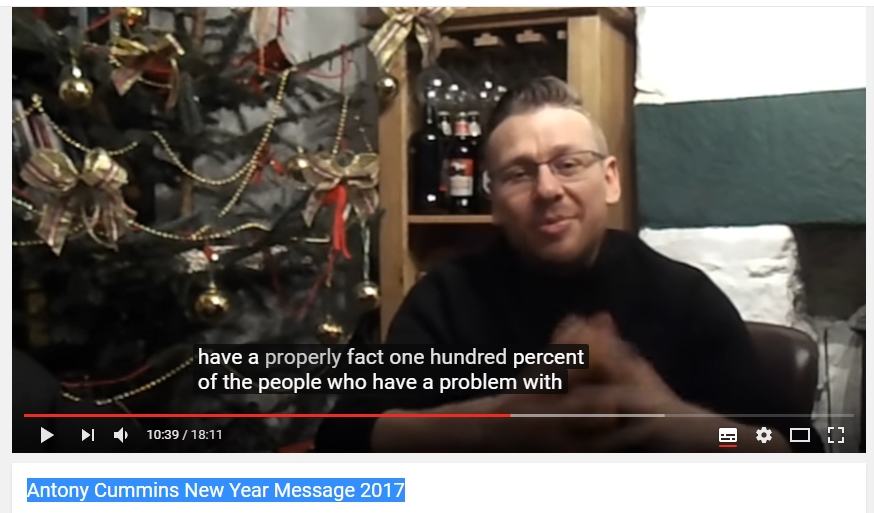 100% of those with a problem are students of recognized koryu schools according to Antony Cummins, source, YouTube.
100% of those with a problem are students of recognized koryu schools according to Antony Cummins, source, YouTube.Thus we can see clearly that any claims to genuine research and accuracy on the part of Cummins are little more than phrases to explain a man, wrapping his Cosplay and LARPing in the trappings of legitimacy.
I have no problem with LARPing, or Cosplay but to label it historical research is misleading and Cummins defrauds the unsuspecting and uninformed public of their money and more importantly their irreplaceable time.
Antony Cummins - The Definition of Fraud
Fraud has 2 primary definitions:
"a person or thing intended to deceive others, typically by unjustifiably claiming or being credited with accomplishments or qualities."
Cummins commits fraud in deceiving others by claiming credit and accomplishment in a field he has no academic qualifications in and for things he simply has not done.
Cummins presents himself to the public, via his books and videos as a ""historical researcher". However, as established in the article, he is not.
He dismisses, falsifies, and willfully misinterprets the actual historical facts, has no ability to read or interpret the subject matter he is discussing and has been largely dismissed by the actual academic community. Presenting himself as, and claiming to be a "historical researcher" is a fundamentally fraudulent claim.
The 2nd definition of fraud according to the Oxford English Dictionary is:
"wrongful or criminal deception intended to result in financial or personal gain".
This is a more serious aspect of fraud and it is the actual books he sells (and now the made up school he sells membership of) for financial and personal gain (this is covered in detail in part 3). These books are sold under a false premise that they are accurate translations. As shown in my article they are not - and are 1) translated by other people 2) Cummins is not capable of reliable interpretation of those translated passages as he demonstrates in his various videos and covered in detail in Part 2.
The books are not factual. The books are not accurate. The school he has created is based on multiple inaccurate and easily demonstrated, misinterpretations. Neither the books or the school meet the academic criteria for either.
The evidence and facts are, as demonstrated, that Cummins is engaged in presenting false information and a false narrative both of himself and his material for financial gain.
What would you call someone who unjustifiably claims credit for accomplishments and qualities that they do not possess and uses these to deceive for financial and personal gain?
I would call them a fraud.
Better Choices of Information
Okay, so Antony Cummins, clearly is providing poor information, so where does that leave someone looking for reliable better information? If you're interested in accurate historical research regarding the samurai I would highly recommend the following:
Heavenly Warriors: The Evolution of Japan's Military, 500-1300- Farris, William Wayne. Council on East Asia Studies, Harvard University Press, 1992
Hired Swords: The Rise of Private Warrior Power In Early Japan- Friday, Karl F. Stanford University Press, 1992
Legacies of the Sword: The Kashima-Shinryu and Samurai Martial Culture - Friday, Karl F. University of Hawaii Press, 1997.
Old School: Essays on Japanese Martial Traditions 2nd Expanded ed. Edition - Amdur, Ellis; Freelance Academy Press, 2014
Warriors of Japan: as Portrayed in the War Tales- Varley, Paul, University of Hawaii Press, 1994
Join me for PART 2 - Why Antony Cummins is Dangerous...
You've been reading about Antony Cummins. Check out my article on translating Japanese here
Read why Antony Cummins is Dangerous in Part 2 of this FAQ
Click here to Return to the Way of the Samurai Home Page
Free Samurai E-books
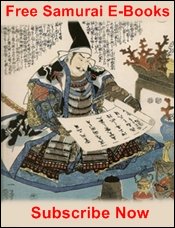
Get Free Exclusive Samurai Guides and E-books





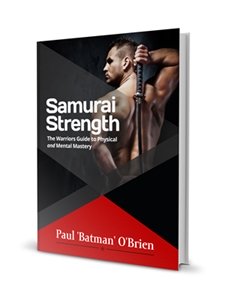
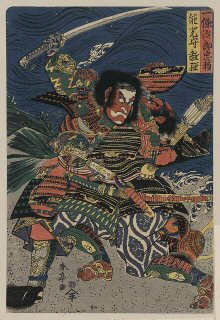
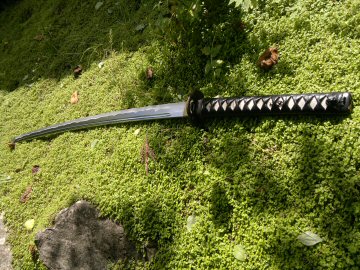
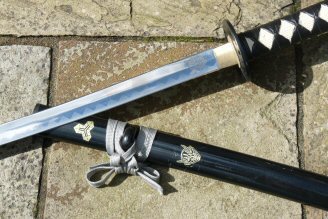
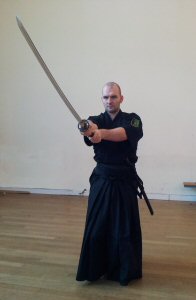
New! Comments
Have your say about what you just read! Leave me a comment in the box below.